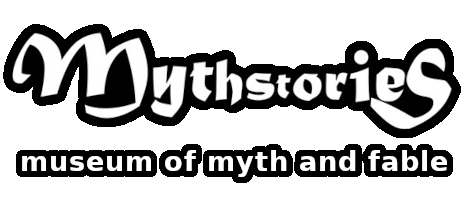The Himalayan Constellation was made up from a small cluster of objects brought back from Nepal by Headteacher Jude Willerton and donated to Mythstories museum on her retirement.
The key object to the constellation was The Two-Faced Nava-Durga Puppet.



As you can see the puppet is still holding the booklet that it was sold with. So to ensure you get the full story from its source here, in the accordion below, is a complete transcription of the contents of the book…
The Story & Legend of Nava-Durga dancers of Bhaktapur
Nava-Durga is a group of nine goddesses, known by everyone throughout the country. They possess destructive as well as protective forces especially in the life of Bhaktapur they are a great importance. The people of Bhaktapur believe that the town is guarded by Nava-Durga piths, or symbolic stones deliniating the town area. These stones represent family or tole goddesses which protect the town and its inhabitants against the harassment and hazards coming from outside. The people of Bhaktapur pay homage to the nine goddesses and hold a chariot festival ‘Bisket Jatra’ every year in April. It is celebrated with great belief, honour and devotion.
To maintain the glory and story of the Nava-Durga a masked dance is performed, staged by the following gods and goddesses:
Mahalaxmi. Mother Goddess Durga and Goddess of wealth and welfare
Bhairab: A destructive incarnation of Siva
Mahakali: Goddess of death and destruction
Barahi: Goddess of braceness
Maheswori: Goddess of greatness and almightiness
Bramha Yani: Goddess of creation
Vaishnabi: Goddess of supp and and nourishment
Kumari: Goddess of purity and virginity
Indrayana: Goddess of rain and administration
Ganesa (the elephant-headed God, son of Siva) God of prosperity is included in the Nava Durga group as Pitha God.
Sweta Bhairab: A peaceful incarnation of Siva
Sima and Duma: The lioness and the tigress are followers of Nava Durga.
The masked dance is decorated with artistic activities and based on the system of tantric modra (action). Every year, on the day of Dasain. Festival in the month of October, Nava-Durga enter with new masks, the town from its outskirts known as Bramhayana Pith by forming a procession. On the day of Bhagasti, in the month of August. All masks will be burnt and the images thus literally die. This ceremony symbolises that the gods have left the town, thus it is ruled by ugly demons during monsoon.
n order to maintain for ever the dance performance, Subarna Malla, a King of Bhaktapur, systematically reorganised at about 1445AD. He installed such a system of performance that the dance takes place consecutively in at 24 toles of Bhaktapur and her neighbouring villages; Thimi, Banepa, Panauti, Dhulikhel, Sanga, Nala, Sankhu, Tokha, etc.
The Legend
Nava-Durga had once hidden in a forest known as Nava Durgajol, about two miles from Bhaktapur Town. The Goddesses, with observance of dance full of enjoyment, would kill and eat flesh of those passing through that very forest. Many people who had gone for business to Nala through that forest never returned home. Those incidents created a dreadful fear in the country but nobody discovered the cause of this strange development.
Once a priest met with Nava-Durga. He was caught too. But just before he was killed he humbly requested the Goddesses to accept his prayer and worship. This was accepted at last. He was a Tantric priest, so through disguise of worship and chanting hymns, he hypnotised them by his Tantric force and knowledge. Being unable to move their bodies, Nava-Durga became compelled and surrendered themselves to the priest begging pardon for their fault of not respecting him. The priest urged them to transfer their lives into dolls’ images which the priest then kept in his house for the sake of worship. Nava-Durga agreed under the condition that he would keep them in secret and meet all other requirements accordingly. After transferring their lives into the images of dolls through Tantric force, the priest accommodated them in a locked room of his house.
Some years later while the priest was worshipping Nava-Durga by dancing, the second and illegitimate wife of the priest peeped through a door hole into that secret room. Nava-Durga got furious and came out smashing the door. They met a pig on their way out and instantly killed it with their long nails in uncontrollable rage. The priest followed them playing Damuru (a small drum) to call them back again but Nava-Durga refused and told him to organise a replica of their dance in public. The priest agreed and taught the dance to the Gathu caste. Since then it is performed in Bhaktapur every year.
Besides wine, beer and blood, the Nava-Durga dance group uses a human skull during their performance. Every three years they select a living person and by Tantri force this man would be killed and his skull taken off. This is still a popular belief which caused much fear among Bhaktapurians.
Dear Customer,
This puppet is wearing the original mask and the traditional costume of the Nava-Durga dancers of Bhaktapur.
According to tradition, the mask is made out of a mixture of two kinds of fine clay and cotton. Every mask is individually formed by hand on a positive loam mould. To stabilise the mask, Napali paper is stuck to the front and the back sides.
After drying in the sun, the mask is painted according to Tantric canon. All the signs which you see on the mask are of symbolic character. There is, for example, the ‘third eye’ on the forehead, the row of skulls, the Pitcher and Smally figure of Nara Singhe and Bramhe on the head which are exclusively worn by the Goddess Durga and her various incarnations.
On average the mask maker takes one day to complete one mask.
The colour of the dress match those of the mask. The stripes of the skirts symbolise the elements, the sky, the earth, the water, the air and the fire.
The real Nava-Durga Dancers are decorated with heavy silver chains, silver coronets, bracelets and emblems each having its own symbolic meaning.
Every God and Goddess is holding his or her one typical symbol in their hands.
The wood carver needs one day to make a pair of carved wooden hands.
To make one puppet many skilled craftsmen are needed. The mask maker, the wood carver, the silversmith, the carpenter, the cloth and hair dyer, the potter, the weaver, the tailor and the assembling woman.
To complete one puppet it takes altogether five days.
This is the image of God Goddess …
Handmade by:
Deepanker Dolls and Puppet Product Workshop
Tachapal tole-3
Bhaktapur, Nepal,
Tel: 613971
Name of God & Goddesses & Colour of Mask (face)
1 Mahalaxmi Brown
2 Bhairab Black
3 Mahakali Red
4 Barahi Brown
5 Maheswari White
6 Bramhayani Yellow
7 Vaishnavi Green
8 Kumari Red, Brown
9 Indrayani Orange
10 Ganesh White
11 Sweta Bhairab White
12 Sima Orange
13 Duma White
14 Shiva White, Blue & Orange
Proprietor:
Asta M Bajracharya
Behind the Nyatapola Temple
Sakotha Tole-11
Bhaktapur
Nepal
The Constellation was completed with three items more normally associated with prayer rather than storytelling. However the three artefacts show ways decorative objects can be used to incant, inspire and provoke oral narratives. The ideas behind them and their functions can be adapted easily to telling stories too so we firmly believed that they should be included here.
The Mani Stone


Mani stones can be found in walls and by roadsides in Tibet and Nepal. They are a call to prayer; an ever present reminder that prayers are part of everyday life, not just to be performed in religious sites and buildings, and spirit is part of human existence, .
Mythstories adapted the idea and made story stones like these in workshops with young storytellers and then put them at the sites of the myths and legends they depicted, so visitors could discover the stories.
Buddhist Prayer Flags

Another way of getting the prayers heard; as the wind flutters the flags the prayers are broadcast through the air.
Buddhist Prayer Wheel

The metal casket holds a paper roll of written prayers and as the wheel is spun by rotating the handle the prayers inside are broadcast.




